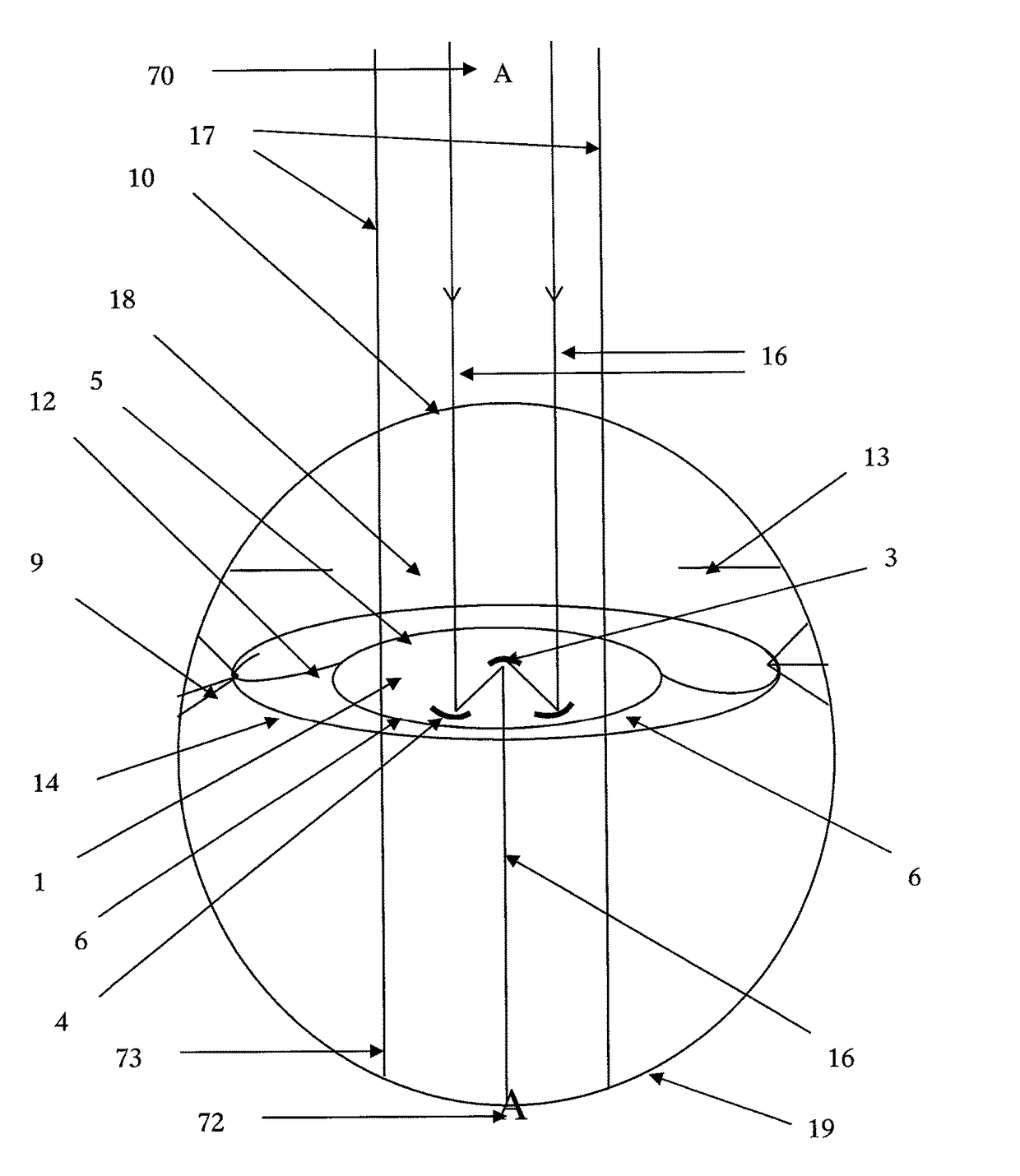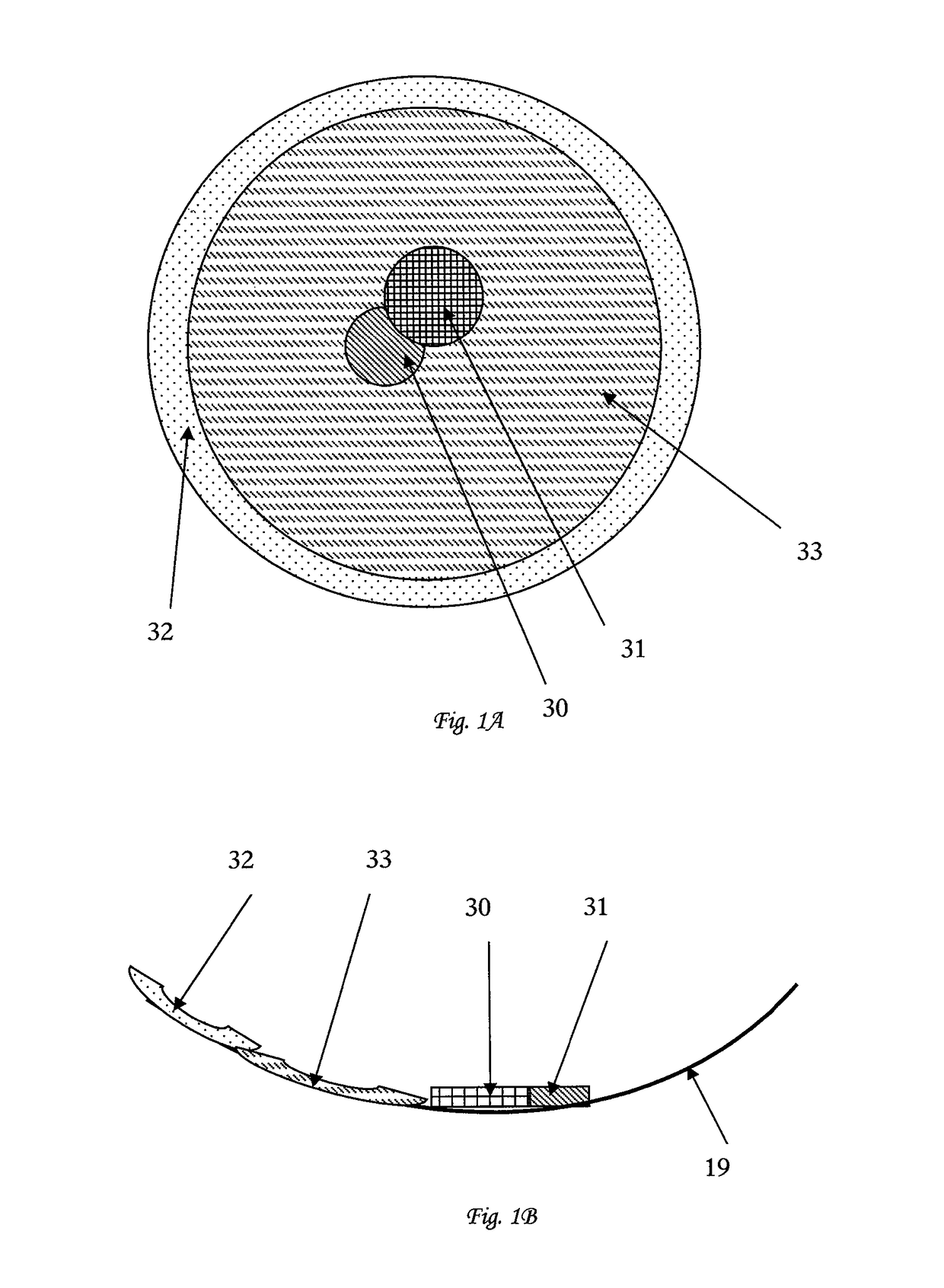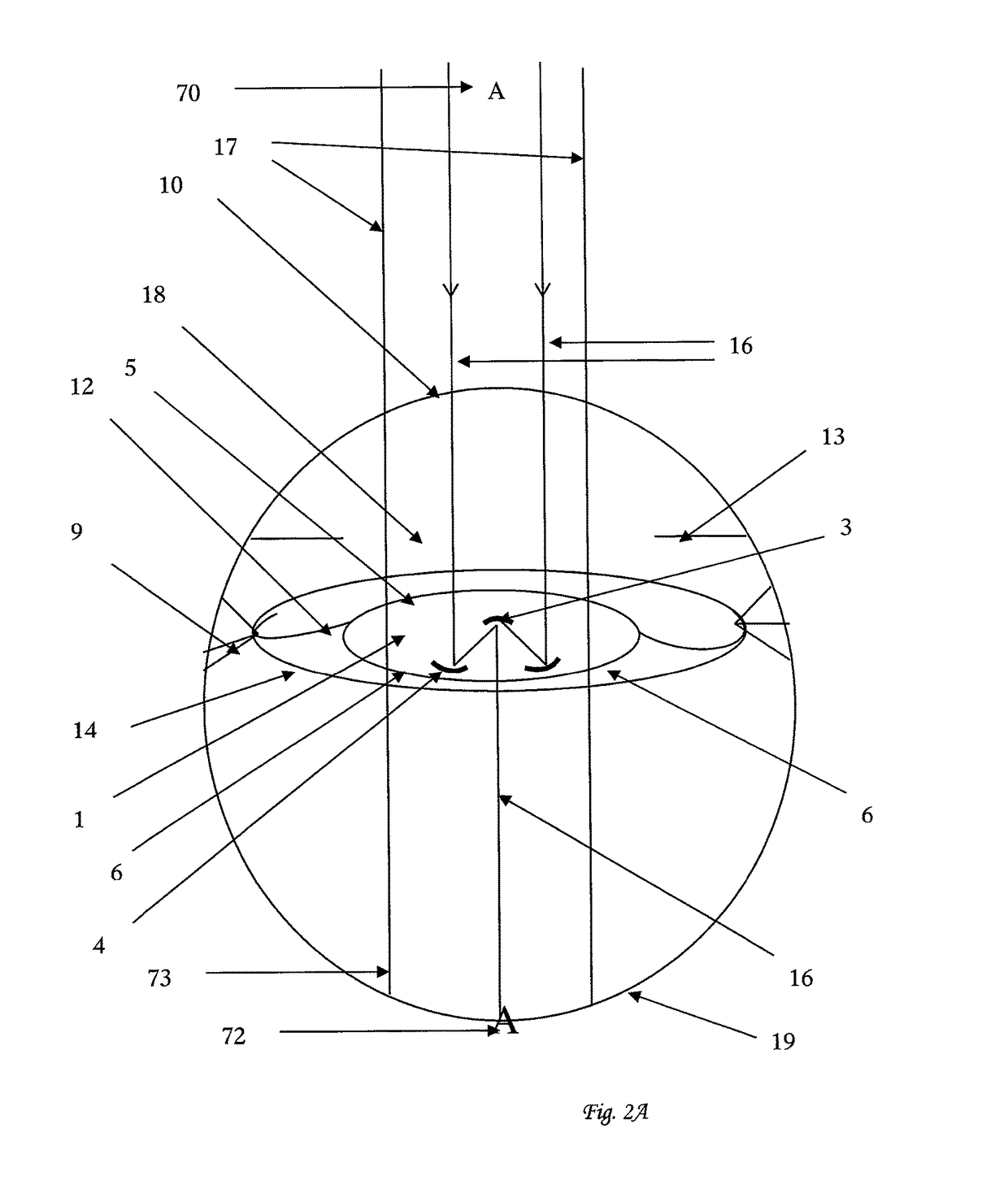Intra-ocular implant
a technology of intraocular implants and ocular arteries, applied in the field of intraocular implants, can solve the problems of limiting the visual improvement that can be achieved using the implant, difficult or impossible to manufacture such implants made of a single piece, and complicated manufacturing, so as to facilitate the bringing of objects into focus, change the curvature, position or optical properties
- Summary
- Abstract
- Description
- Claims
- Application Information
AI Technical Summary
Benefits of technology
Problems solved by technology
Method used
Image
Examples
Embodiment Construction
[0033]In order to understand the invention and to see how it may be implemented in practice, preferred embodiments will now be described, by way of non-limiting example only, with reference to the accompanying drawings in which
[0034]FIG. 1A presents a schematic vertical illustration of the image received on the retina according to one embodiment of the present invention;
[0035]FIG. 1B presents a schematic side view of the image received on the retina according to one embodiment of the present invention;
[0036]FIG. 2A presents a schematic illustration of perceivable color differences received on the retina according to one embodiment of the present invention;
[0037]FIG. 2B presents a schematic illustration of perceivable color differences received on the retina according to another embodiment of the present invention;
[0038]FIG. 3 presents a schematic illustration of overlap and / or illumination reduction according to one embodiment of the present invention.
[0039]FIG. 4 presents a schemat...
PUM
 Login to View More
Login to View More Abstract
Description
Claims
Application Information
 Login to View More
Login to View More - R&D
- Intellectual Property
- Life Sciences
- Materials
- Tech Scout
- Unparalleled Data Quality
- Higher Quality Content
- 60% Fewer Hallucinations
Browse by: Latest US Patents, China's latest patents, Technical Efficacy Thesaurus, Application Domain, Technology Topic, Popular Technical Reports.
© 2025 PatSnap. All rights reserved.Legal|Privacy policy|Modern Slavery Act Transparency Statement|Sitemap|About US| Contact US: help@patsnap.com



